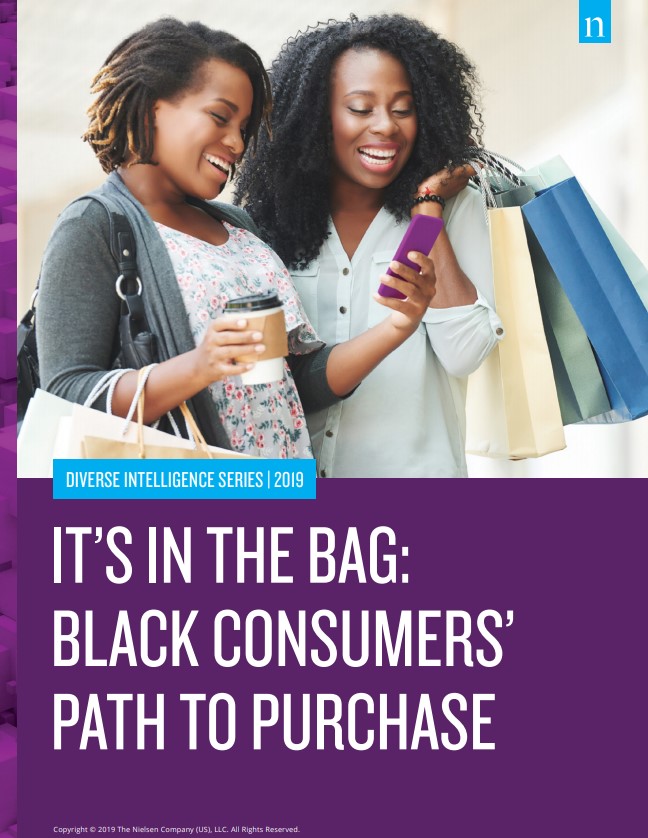[ad_1]
Cheryl Grace has spent the last 15 years with Nielsen, the company perhaps best known for TV ratings. But it—and she—do so much more. As the senior vice president of U.S. Strategic Alliances and Consumer Engagement, Grace is the creator of the Diverse Intelligence Series, the premier source of data about multicultural consumer markets. She recently sat down with Black Enterprise to give us exclusive insight about African American consumers and their latest report, It’s in the Bag: Black Consumers Path to Purchase:
What is the Diverse Intelligence Series and why does Nielsen do it?
We started producing these reports in 2011 because we felt like our clients needed to understand the value of African American consumers. And it was such a success that we also then started adding reports for Asian-American consumers and our Latinx consumers. And we have found that brands really do care about what information they can get to help them make their decisions. But not only that, consumers really love this information too, and small black-owned businesses love this information. It’s been really, really popular among consumers and brands alike.
This is the ninth year of the series. Why do you personally do this?
Because I didn’t know about this until I started working on the consumer division of Nielsen. I had no idea of what our power was. I had no idea where we were spending our money. When I started seeing that information, it made me recognize that if this is of interest to me, I think it would be of interest to consumers across the board and certainly brands would be interested in knowing how much we spend on what we spend, and why we get there. When I meet somebody and they hear I’m with Nielsen, they hear my name, they say ‘Oh my god, your report changed my life. I took it into a business meeting.’ We ran into Marc Morial one day, and he’s like ‘I carry this report with me.’ It’s my contribution to doing something that is going to be a positive influence on the economy.
This year’s report is focused on everyday purchases. How can African American consumers be more conscious when they’re making their everyday $5, $10, $20 purchases?
One of the things that we included in this report is that we use an influencer ourselves. We’ve tapped into Angela Rye, and her quest to keep people woke. She has a guest commentary in the report, where she actually talks to brands and to consumers about why this everyday spending is so important. And how you as consumers can ask yourself questions, which Nielsen has been encouraging you to ask since 2011, before you make any purchases. Can I find this product in my neighborhood? Does this brand hire people who look like me? Do they portray them in a positive way? And do they support causes that are important to me? The fifth question is, if any of the answers to the other four is no, do you still want to spend your money with this brand. So that puts a little bit more onus on you, as a consumer, to not just hand out your money to strangers but know who you’re spending your money with.

What do you think is the biggest misconception out there about African American consumers?
That because our household income tends to be a little bit less than the total population, that we don’t have money to spend. And some brands will stop there at making their decisions about which target audience to go at, and not consider the fact that we’re trendsetters, that if you attract us, you’re also going to attract other demographics; that our celebrities are the celebrities that everybody wants to emulate, regardless of color. They’re not taking that into consideration. And that’s a big miss.
One of the links between this report and the last is about the importance of community.
You know, we didn’t talk about the Popeye’s [chicken sandwich] campaign from a community perspective. That’s an example of how when we get behind something, we put our power behind something, it’s incredible. I just wish we would recognize it more often. And use it for good.
How do African American consumers make decisions differently than the general consumer?
A lot of it has to do with where we’re spending our time and our money. And the advertisements that are coming at us through those sources, those devices, or those platforms. We’re being exposed a little bit differently. And then we also pay more attention to which brands are telling our story, or which brands are trying to connect with us to get it right, in a positive way, not like a stereotypical way. That’s how our brain kind of works. And again, I use that Popeye’s experience as an example of that, or the Nike experience, or the McDonald’s experience, or P&G, you know, ‘The Look,’ ‘The Talk,’ My Black Is Beautiful. We’re loyal. And we have long memories. If right off the bat, you get us wrong, there’s not a lot of coming back from that.
It’s a huge report filled with a lot of good information. But if people only took one thing away from this year’s study, what would you want it to be?
That niche content matters. That is one of the biggest changes that I’ve seen, is that with the influx of Netflix and Prime and all the streaming devices, you start to see that we are more likely to be watching programs that tell our stories in a number of different ways. That matters. That’s a huge shift right there. Because we have choices now.
[ad_2]
Source link

